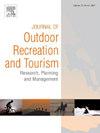徒步旅行和登山推荐系统:主要户外应用程序的概念框架和评估
IF 4.4
3区 管理学
Q1 HOSPITALITY, LEISURE, SPORT & TOURISM
Journal of Outdoor Recreation and Tourism-Research Planning and Management
Pub Date : 2025-09-25
DOI:10.1016/j.jort.2025.100959
引用次数: 0
摘要
户外娱乐的日益普及,以及移动应用程序的扩展,正在改变人们与自然环境互动的方式。在这种背景下,推荐系统(RS)不仅在娱乐活动期间规划行程和支持决策方面发挥着越来越重要的作用,而且还通过调节娱乐体验本身发挥作用。本研究分析了这些系统如何在徒步旅行和登山应用中运行。其目标是产生一个概念框架,综合个性化的关键要素,并将其与市场上主要商业平台的声明功能进行对比。调查分为三个阶段:首先,回顾文献,分类不同类型的RS和他们需要的数据;其次,围绕四个维度(用户、内容、上下文和社区)设计结构化模型;最后,对五个常用应用程序(Komoot、Outdooractive、Strava、Wikiloc和AllTrails)进行文档分析,将它们与模型进行比较。结果显示了平台之间的显著差异。Strava和AllTrails是唯一集成了模型所有组件的两个。其余的则显示在整合用户特定信息和他们的集体行为数据方面存在差距。此外,优先考虑流行内容的倾向可能会限制推荐的多样性,并导致地域影响。这些发现为自然区域的管理提供了相关证据,展示了这些系统的设计如何影响游客流量和户外娱乐活动的可持续性。研究结果揭示了将基于人工智能的推荐系统集成到户外娱乐应用中的关键挑战和机遇,并对保护区的管理产生直接影响。−娱乐体验的数字化正在改变游客的行为和期望;数字技术应被视为环境传播的战略工具。−个人决策的聚合和自动推荐的使用可能导致游客集中在特定地点,增加环境压力并损害可持续管理目标。−这些系统往往会强化占主导地位的空间表征,限制领土和文化多样性,并可能破坏保护和遗产价值。−保护区管理者和应用程序开发人员之间的有效合作对于提高推荐的质量、多样性和可持续性至关重要。−解释这些系统在实践中如何运作的经验模型对于预测其影响、设计适当的干预措施和支持基于证据的领土规划至关重要。本文章由计算机程序翻译,如有差异,请以英文原文为准。
Recommender systems for hiking and mountaineering: A conceptual framework and evaluation of leading outdoor apps
The growing popularity of outdoor recreation, together with the expansion of mobile applications, is transforming the way people interact with natural environments. In this context, recommender systems (RS) play an increasingly significant role, not only in planning itineraries and supporting decision-making during recreational activities, but also by mediating the recreational experience itself. This study analyses how these systems operate in hiking and mountaineering applications. Its objective is to produce a conceptual framework that synthesises the key elements of personalisation and contrasts them with the declared functionalities of the main commercial platforms on the market. The investigation was developed in three stages: firstly, reviewing literature that categorises the different types of RS and the data they require; secondly, designing a structured model around four dimensions (user, content, context, and community); and finally, a documented analysis of five commonly used apps (Komoot, Outdooractive, Strava, Wikiloc, and AllTrails) to compare them with the model. The results reveal notable differences between the platforms. Strava and AllTrails are the only ones that integrated all the components of the model. The rest show gaps in incorporating user-specific information and their collective behavioural data. Furthermore, the tendency to prioritise popular content can limit diverse recommendations and lead to territorial impacts. These findings provide relevant evidence for the management of natural areas, showing how the design of these systems may influence visitor flows and the sustainability of outdoor recreational activities.
Implications for management
The results reveal key challenges and opportunities in integrating AI-based recommender systems into outdoor recreation applications, with direct implications for the management of protected areas.
- −Digitisation of recreational experiences is transforming visitor behaviour and expectations; digital technologies should be recognised as strategic tools for environmental communication.
- −The aggregation of individual decisions and the use of automated recommendations can lead to visitor concentration in specific locations, increasing environmental pressure and compromising sustainable management goals.
- −These systems tend to reinforce dominant spatial representations, limiting both territorial and cultural diversity and potentially undermining conservation and heritage values.
- −Effective collaboration between protected area managers and app developers is essential to improve the quality, diversity, and sustainability of recommendations.
- −Empirical models that explain how these systems operate in practice are critical to anticipating their impacts, designing appropriate interventions, and supporting evidence-based territorial planning.
求助全文
通过发布文献求助,成功后即可免费获取论文全文。
去求助
来源期刊

Journal of Outdoor Recreation and Tourism-Research Planning and Management
HOSPITALITY, LEISURE, SPORT & TOURISM-
CiteScore
6.70
自引率
5.30%
发文量
84
期刊介绍:
Journal of Outdoor Recreation and Tourism offers a dedicated outlet for research relevant to social sciences and natural resources. The journal publishes peer reviewed original research on all aspects of outdoor recreation planning and management, covering the entire spectrum of settings from wilderness to urban outdoor recreation opportunities. It also focuses on new products and findings in nature based tourism and park management. JORT is an interdisciplinary and transdisciplinary journal, articles may focus on any aspect of theory, method, or concept of outdoor recreation research, planning or management, and interdisciplinary work is especially welcome, and may be of a theoretical and/or a case study nature. Depending on the topic of investigation, articles may be positioned within one academic discipline, or draw from several disciplines in an integrative manner, with overarching relevance to social sciences and natural resources. JORT is international in scope and attracts scholars from all reaches of the world to facilitate the exchange of ideas. As such, the journal enhances understanding of scientific knowledge, empirical results, and practitioners'' needs. Therefore in JORT each article is accompanied by an executive summary, written by the editors or authors, highlighting the planning and management relevant aspects of the article.
 求助内容:
求助内容: 应助结果提醒方式:
应助结果提醒方式:


